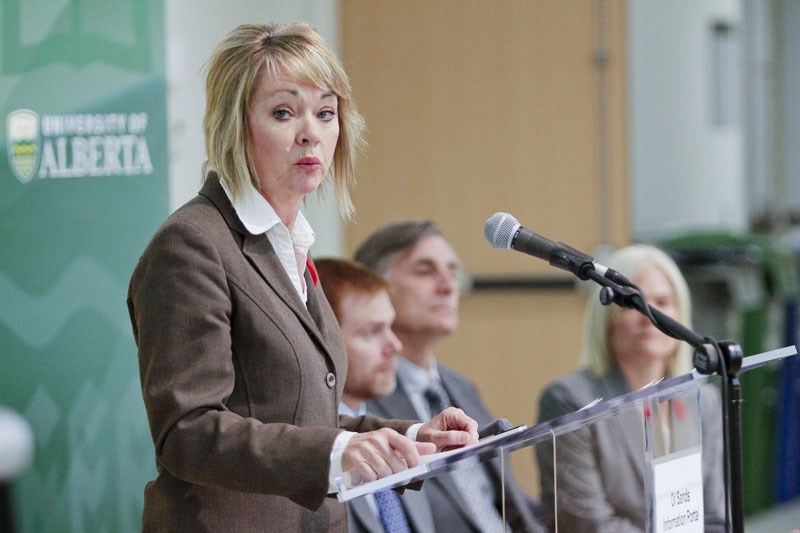A new provincial website makes it easier than ever to find out the facts about the Alberta oilsands, but also shows how the industry needs to clean up its act.
Alberta Environment and Water Minister Diana McQueen unveiled the province’s new Oilsands Information Portal at the University of Alberta last Thursday. The website features an interactive map of Alberta that shows a plethora of facts about Alberta’s oilsands facilities, including the size, location, production, water use and greenhouse gas emissions. All the information is government audited.
This site should act as a one-stop shop for people to get the facts for an informed debate about oilsands development, McQueen said.
“Good science is driven by debate and dialogue,” she said. “This portal puts data in one place where it can be evaluated by everyone.”
Much of it is very easy to access: click on greenhouse gas emissions, for example, and you can learn that the oilsands produce about 18 per cent of the province’s emissions — more than all the cars, trucks and trains in the province. You can also click on individual tailings ponds to determine their size, and see satellite photos of their development over time.
All of this information was publicly available, notes Andrew Leach, a professor who studies environmental and energy economics at the University of Alberta, but often only at great cost and after weeks of effort. “Now, under this system, you can actually click on it and find it, no problem.”
This is a commendable increase in transparency, Leach said, one that shows the world that Alberta has nothing to hide. “Basically all we hear about the tailings ponds is that we can see them from space,” he said. “Now we can go in and see how big they are, where they are and what the deposition rates are.”
But this doesn’t mean that the province is off the hook for cleaning up the oilsands, he added.
“Providing information isn’t equivalent to providing better performance.”
He planned to use the site to keep a close eye on greenhouse gas emissions from individual facilities to find out who was leading the pack.
The site can be found at environment.alberta.ca/apps/osip.
Are the oilsands making boreal birds sing the blues? In some cases, yes, says a local biologist.
Erin Bayne, a professor of biological science at the University of Alberta, is giving a talk at the Edmonton Nature Club this Friday on how our actions affect birds in the boreal forest.
The boreal forest covers about half of Alberta, says Bayne, and has gone through rapid change over the last 20 years due to oil, gas and forestry exploration.
“With that comes a lot of economic benefits, but there are ecological costs to the system,” he says. “Birds are doing fine, but some species are doing really poorly and others are doing incredibly well.”
This is most obvious with warblers such as the Canada warbler (dark grey back, yellow belly), which is listed as a species of concern in Alberta. They depend on old growth forests, and have been on the decline over the last few decades as industry chops those trees down. Chipping sparrows (rusty crown, hangs around shrubs), on the other hand, are well adapted to people and are thriving.
Compressor stations are another influence. These stations produce about as much noise as a major highway, he says, and do so 24 hours a day. His research suggests that birds avoid these areas, as those that don’t have fewer births, presumably because females can’t hear males over the noise. Early research suggests that some birds are changing the frequencies of their songs so they can be heard over the din.
Many of these birds migrate through St. Albert during the spring and fall, notes local birder Alan Hingston, with some observers noting steep declines in their numbers over the last 40 years.
“It’s not just the boreal forest,” he said, cats, buildings and pesticides are all contributing to greater bird deaths. “These birds are being hammered at every turn.”
Protecting boreal birds comes down to provincial policy, Bayne said.
“If people really want to see these birds around in reasonable numbers in Alberta, as our legislation states, the government needs to know that.”
Bayne’s talk starts at 7 p.m. at the King’s University College in Edmonton. Admission is by donation. Visit www.edmontonnatureclub.ca for details.




